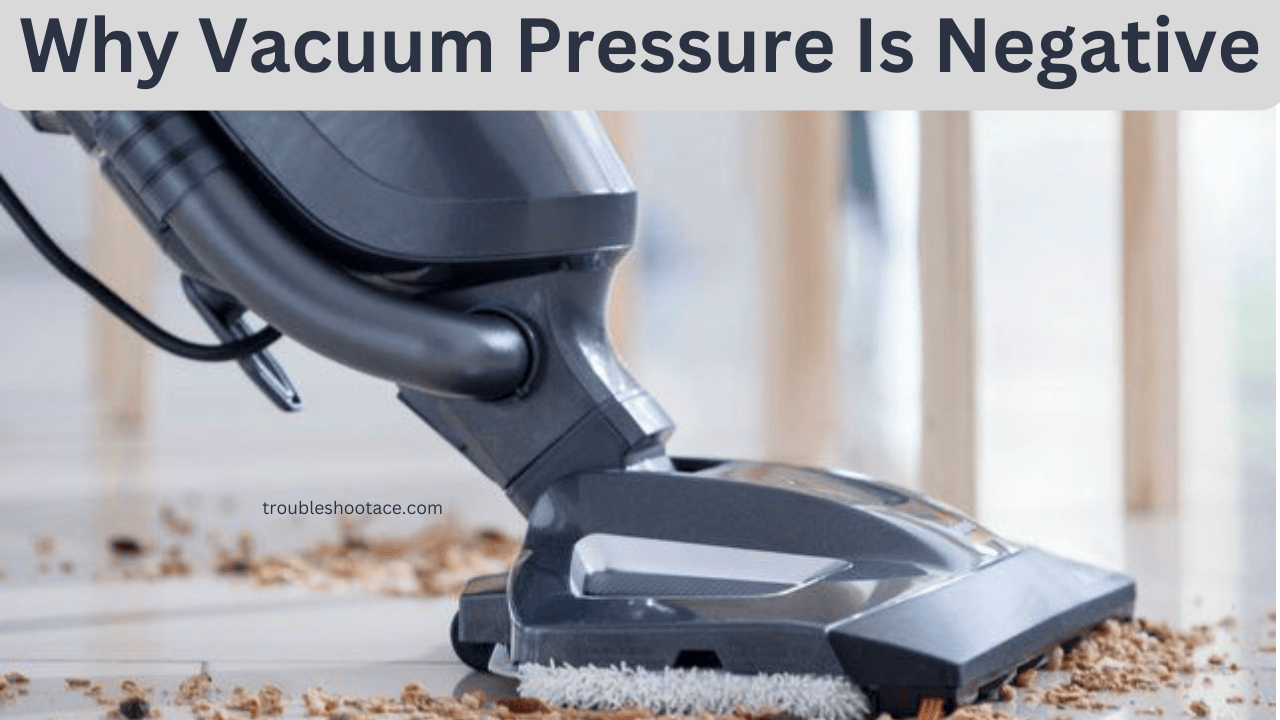Since vacuum pressure is determined by atmospheric pressure, it is negative. The weight of the air molecules in the atmosphere exerts a force known as atmospheric pressure. A vacuum is said to have negative pressure when its pressure is lower than that of the atmosphere. Air or other materials can be drawn in by vacuums thanks to this negative pressure.
Why Negative Vacuum Pressure is Beneficial
Process Efficiency: The application of negative vacuum pressure improves process efficiency by providing the perfect conditions for certain operations such as vacuum sealing, degassing, and freeze-drying.
Preservation of Materials: By generating a controlled environment that reduces oxidation and stops spoiling, negative pressure aids in the preservation of perishable goods.
why vacuum pressure is negative
The idea of negative pressure can seem a little strange when discussing vacuum pressure. Now let’s explore it:

Vacuum and Pressure:
Typically, when we discuss pressure, we consider the force that a gas or liquid applies to a surface. For example, the weight of the air above us causes atmospheric pressure to press down on us.
However, there is no matter or particle in a vacuum. Nothing but void no gas, no molecules of air. Since there isn’t any force exerted outward, the pressure is regarded as negative.
Negative Gauge Pressure
Vacuum pressure is the term used to describe conditions in which the pressure in a system (such as a vacuum chamber) is less than the pressure in the local atmosphere, or the pressure surrounding us.
Zero pressure would be associated with a perfect vacuum. It is nearly impossible to achieve absolute zero pressure, though.
It is possible to have negative absolute pressure, but not negative gauge pressure.
Casimir Effect:
A fascinating vacuum pressure-related phenomenon is the Casimir effect.
Envision putting two parallel, flat plates similar to mirrors very near to one another in a vacuum. Virtual particle-antiparticle pairs are prevented from forming by the vacuum that exists between these plates.
The “pressure” between the plates is lowered as a result, creating the Casimir effect, an attraction.
Therefore, even though the pressure appears negative in this situation, it’s important to realize that it’s about the rest of the laboratory.
Practical Example
Think of a vacuum cleaner: When you switch it on, an area of negative pressure forms inside the bag or canister. This negative pressure sucks in air and particulate matter, leaving your floors cleaner
In short, while the term negative pressure might seem paradoxical, it arises from the absence of matter and the unique conditions of a vacuum.
How do I maintain my vacuum pump?
Vacuum pump maintenance is essential for its longevity and optimal performance. To ensure proper maintenance,
- Inspect the surrounding environment
- Conduct a visual pump inspection
- Regularly check the oil level
- Use an inlet cold trap
- Consider gas ballast
- Protect against particulates
- Run the pump after use.
The vacuum pump’s lifespan can be considerably increased by routine maintenance, which can also save expensive repairs.
Examine the surrounding area for pollutants, airflow, and shifting weather patterns. To verify the integrity of the pump and look for oil leaks, visually inspect it. Check the oil level frequently and make any necessary adjustments.
To shield the pump from corrosive vapors, use an inlet cold trap. For high vapor loads and corrosive gases, think about using a hybrid pump. Use an inlet separator and routine inspections to protect against particulates. To ensure optimal operation and remove solvents from the oil, run the pump after use.
Also Read: Xiaomi Vacuum Mop Not Working | Quick Fixes and Tips
Conclusion
Understanding why vacuum pressure is considered negative provides insights into its significance and applications across various fields. Embracing the negative aspect of vacuum pressure opens up a world of possibilities for improved efficiency, preservation, and innovation.

